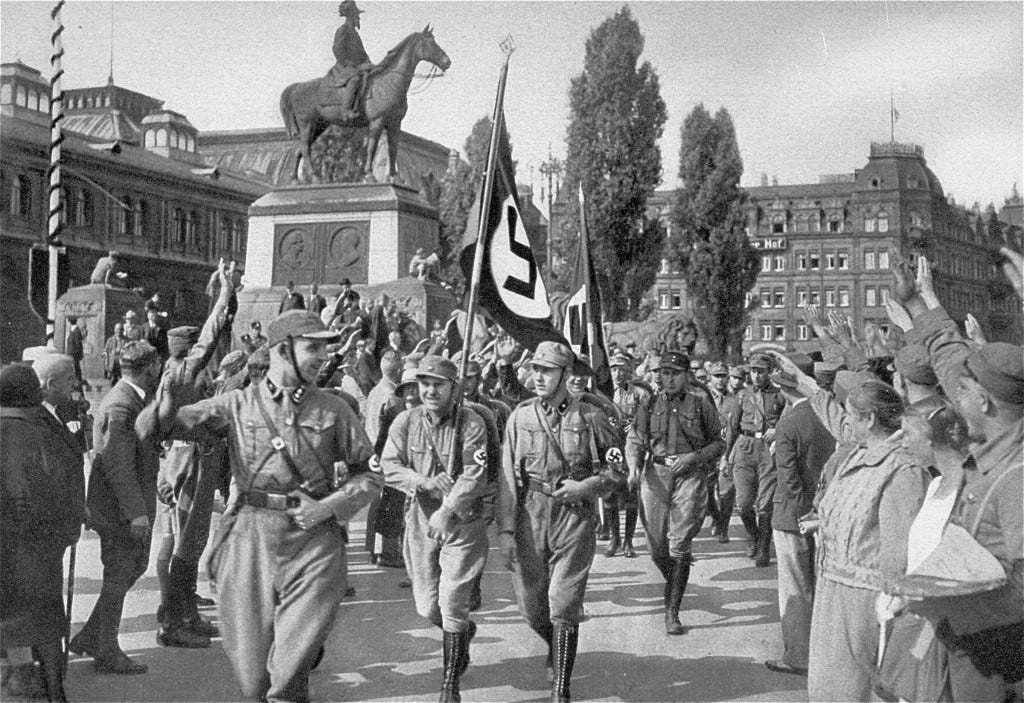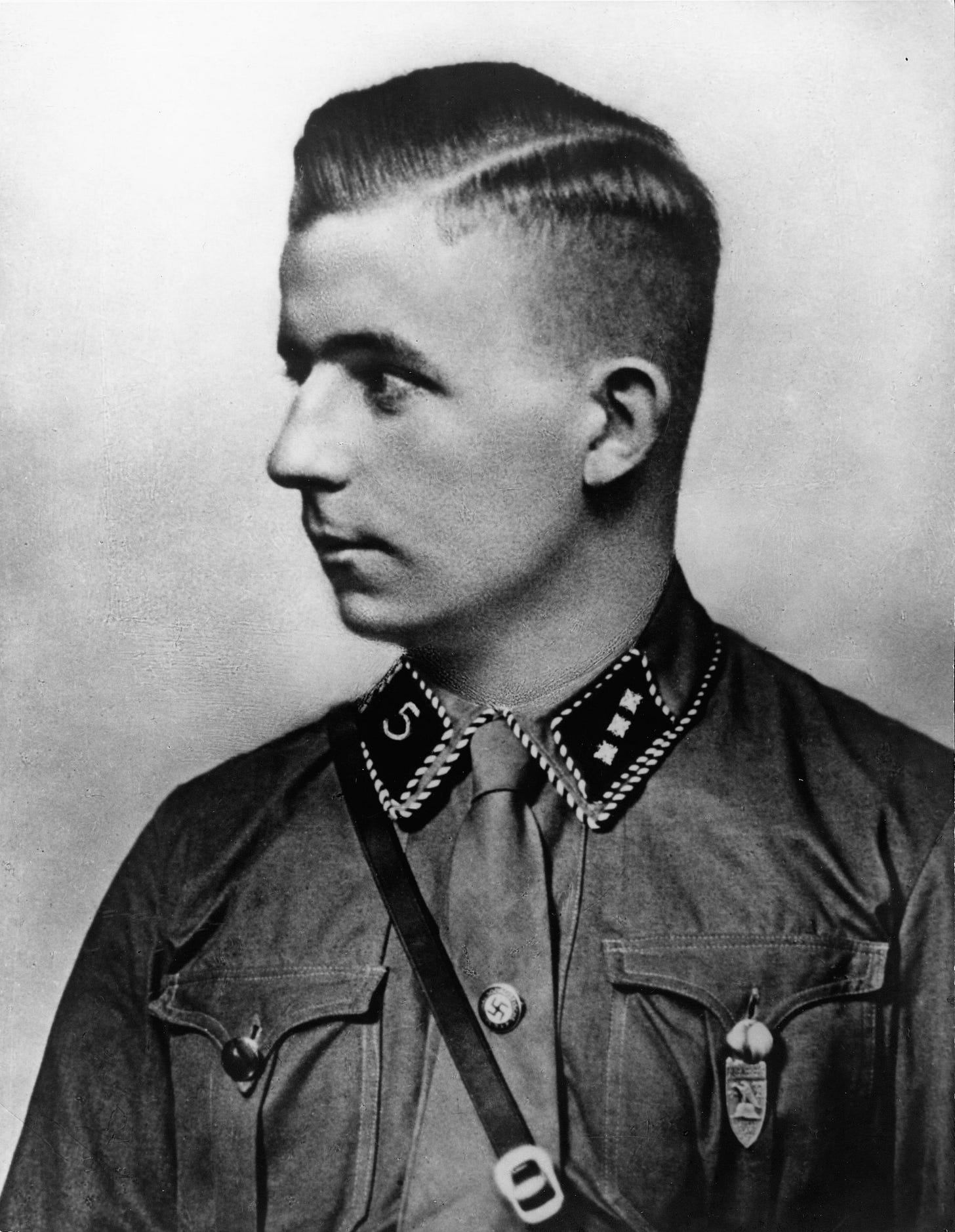Manufacturing a Martyr
Authoritarian regimes create mythic martyrs to fan hatred against internal enemies
Horst Wessel was not a household name in Germany when he was alive. He was a young member of the Nazi paramilitary—the Sturmabteilung, or SA—living in a poor Berlin neighborhood. He made speeches, wrote pamphlets, and got into fights with communists. But he wasn’t famous.
What made him famous was his death.
In 1930, Wessel had a dispute with his landlady over unpaid rent. There were rumors about his relationship with a prostitute. The landlady turned to friends in the Communist Party for help. One of them, Albrecht Höhler, showed up at Wessel’s apartment. Words were exchanged, a gun was drawn, and Wessel was shot in the face. He lingered in the hospital for weeks before dying.
By most accounts, this was a local quarrel with political undertones, not a grand ideological showdown. But Joseph Goebbels, the Nazi propaganda chief, saw an opportunity. He had been looking for a martyr—a young man who could be lifted up as a symbol of sacrifice, purity, and faith.
Wessel fit the bill.
Goebbels orchestrated an enormous funeral. Thousands of stormtroopers marched. Speeches thundered against the communists. They used their words to light fires of hatred against Nazi opponents. The party presented Wessel as a fallen hero, cut down by enemies of Germany. His song—he had written the lyrics to the “Horst-Wessel-Lied”—was adopted as the party anthem. After Hitler seized power, it stood alongside the “Deutschlandlied” as the semi-official anthem of the Third Reich.
The Nazi state then wrapped itself in Wessel’s memory. His song was played constantly. Germans were required to give the Nazi salute whenever it was sung. Schools drilled it into children. Mocking it was treated as treason. People who joked about Wessel or parodied the anthem were arrested, beaten, or even sent to camps. The name itself became sacred—invoked at rallies, etched into monuments, and used as a recruiting tool for the SA.
In life, Wessel was a marginal figure. In death, he became the face of a movement. His story was rewritten and polished into propaganda. Whatever the messy details of his personal life—debts, disputes, rumors—they were scrubbed away in favor of a cleaner tale of martyrdom.
History shows us how easily propaganda can turn a man into a myth. How one death, when framed in the right way, can be used to rally a movement, recruit followers, and stoke hatred against enemies.
And it shows how quickly a funeral can become a political rally.
Thinking about this historical note for no particular reason.




